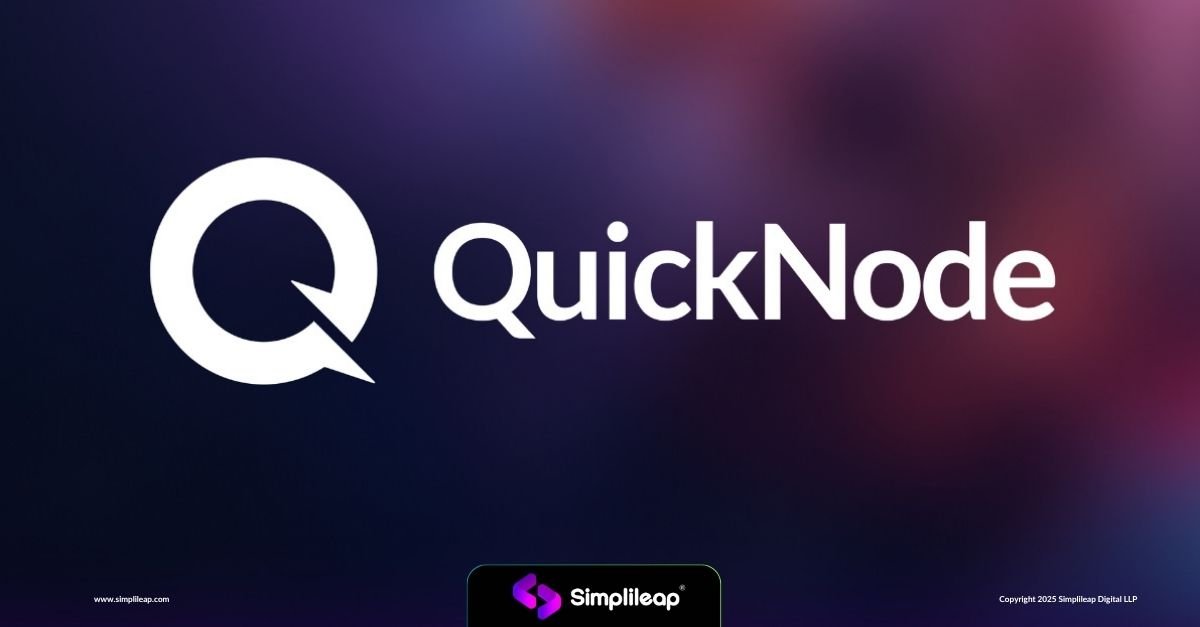
What is QuickNode?
QuickNode is a blockchain infrastructure that gives developer tools and services to interact with different blockchains. The Quicknode api offers 40+ blockchain access 60+ network access.
Quicknode offers tools like IPFS, Streams, QuickAlerts etc.
IPFS(Interplanetary File System) – is a protocol for transferring or sharing data without any centralized server.
Streams – gives access to the real time blockchain events into your app like if any new transaction is done to any wallet then the stream gives the real time data to the app.
What are QuickAlerts?
Quickalerts gives real-time notifications or alerts of the real-time events that are happening in the blockchain network.
So developers can get real time notifications or alerts of a particular token they are expecting, If any changes happen for that relevant token.
To access QuickAlerts, Quicknode provides two ways. One is through QuickNode Developer Portal and the other one is through the QuickAlerts REST Api.
How to set up QuickAlerts?
Step 1: Creating an Endpoint
Creating an endpoint is a first step for setting up QuickAlerts.
Creating an endpoint is required as the endpoint helps us to connect to the blockchain network.
- Login to your Quicknode account.
- Go to the QuickNode Dashboard and select the endpoints Tab and then select a chain as per your requirement. Just follow the steps required for endpoint creation and then your first step for setting up of quickAlert is done.
Step 2: Creating Destination:
The second step for quickAlerts setup is creating a destination.
Creating a destination is a very crucial step as blockchain requires a destination so that it can send the payload or updates to some accurate recipients.
For creating a destination five body parameters are required.
- Go to QuickNode dashboard.
- Select QuickAlerts and then go to the Destinations tab and click on create destination.
- Select webhook and give the url and hit the create button.
- Once the destination is created, click on the destination you made and copy the destination Id from the browser’s url.
Step 3: Creating Notification:
For creating notification api key is required. You can get your api key by clicking on your avatar and then clicking the api keys tab.
Copy the api key as it is required for alert creation.
Alert notification requires four body parameters
- Name: name of your notification.
- expression: Base64 encoded expression. QuickAlerts expressions are required as it provides the conditions. So if that condition is met then the blockchain will trigger the notification. Expressions basically are used for filtering the notifications. So if you want transactions that are above 1ETH you can provide the logic for that condition.
Below given example shows the expression for all the transactions happening for the address 0x13CB6AE34A13a0977F4d7101eBc24B87Bb23F0d5
Eg: tx_to == ‘0x13CB6AE34A13a0977F4d7101eBc24B87Bb23F0d5’ || tx_from == ‘0x13CB6AE34A13a0977F4d7101eBc24B87Bb23F0d5’.
Note: The expression is required only if we are creating notification through api’s and the expression should be Base64 encoded.
- Network: The network required for this notification. Expression also requires the network name like “base-mainnet”, “base-sepolia”, “doge-mainnet” etc.
- destinationIds: Destination Id is basically an array of strings that has destination ids. Destination Ids are required as it sends the payload to the destination.
Below is a simple example of a quickAlerts where it sends the request to the quickNode quickAlerts api which monitors all the transactions happening on the eth address 0x13CB6AE34A13a0977F4d7101eBc24B87Bb23F0d5.
The api call sends the notification to the destination Ids if the required conditions are met that are written on the quickAlert expression.
Api key is provided in the headers.
Body contains name of the notification, expression for a logical notification filtering, network required for the notifications and the destination Ids.
Conclusion
Setting up Quicknode QuickAlerts will enable developers to watch blockchains and receive notifications instantaneously in case of any blockchain events. Developers then would be able to create endpoints and destinations and set their rules for notifications using expressions, allowing them to send alerts of their chosen transactions and tokens. This allows blockchain applications to function- meaning any network changes made-immediately. It further improves both how well the system works and how users feel about it, whether directly with the Quicknode Developer Portal or through the QuickAlerts REST API. The various choices on multiple blockchains make it very powerful for monitoring and interacting with blockchains.
For more information regarding quicknode, feel free to reach out to us at info@simplileap.com.

A Software Engineer with a B.Tech. degree, leveraging a strong foundation to tackle challenges and innovate in the ever-evolving tech landscape. When I’m not coding, I enjoy unwinding with a good playlist, allowing music to fuel my creativity and well-rounded approach to problem-solving.



